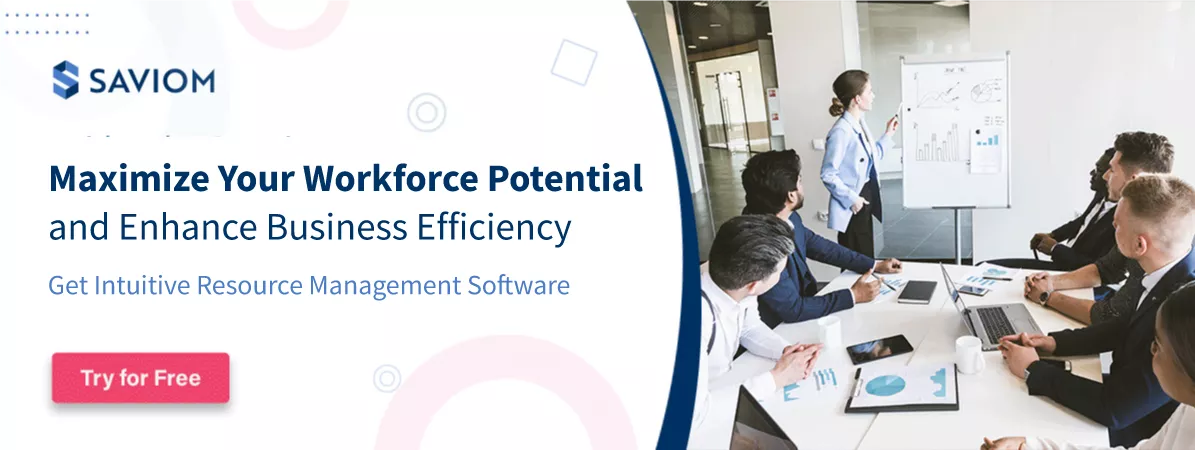Take a moment to look around your office, department, or team. What do you observe?
Is it a group of similar-aged individuals or a collective group of different generations working together? If it’s the latter, then you are unknowingly embracing a multigenerational workforce.
As of 2021, workers from four generations are active in the workplace: baby boomers, millennials, Generation X and Generation Z.
You must have leveraged the benefits of being a part of a cross-generational talent pool. But, at the same time, the mindset shifts that surface when extreme generations work in one team might have caught up with you too.
From work preferences to cultural perspectives, each generation has different skills and psychological attributes in an organization. So how can employees from different generations blend their talents and experiences seamlessly to work effectively in the workplace? Or are the productivity issues stemming from generational differences inevitable?
Well, the optimal solution here is to leverage the strengths of each generation while also facilitating communication so that everyone is being heard and respected. That way, business owners will be able to manage a highly diverse workforce, foster diversity, and inclusion, and eventually boost productivity to meet changing business demands.

Here are just a few strategies that will help you to enhance the productivity of the multigenerational workplace.
But first, let’s get our basics right.
What is a multigenerational workforce?
An active workforce that comprises employees from different generations such as baby boomers, generation X, generation Y, and generation Z is known as the multigenerational workforce. During formative decades, major world events influenced these varied generations. These groups are defined as:
Baby Boomers (1946-1964)
Baby boomers are the oldest generation currently in the workforce. They range in age from 55 and 74. Many boomers have retired or will soon retire, with the youngest boomers turning 65 (the average retirement age) by 2029.
Gen X (1965-1980)
Generation X, sometimes known as “the middle child,” is the generation between the baby boomers and the millennials. Individuals of Gen X range in age from 40 to 55.
Millennials/Gen Y (1981-1996)
Drastic socioeconomic changes have influenced millennials. As of 2021, millennials range in age from 24 to 40 and make up most of the current workforce.
Gen Z (1997-present)
The newest workforce members, Gen Z, are between the ages of 23 and infancy as of 2021. They are the first true tech natives, having never known a world without the internet as it exists today.
Read More: 7 Powerful Insights on Sustaining High-Performance Work Teams
Now, let’s understand the significance of the multigenerational workforce in an organization here;
What are the benefits of a multigenerational workforce?
According to a study by Randstad that surveyed 400 employees, 83% claimed that working in an age-diverse team allows them to develop more innovative ideas and solutions.
For instance, in a project, you need a diversity of mindsets, skills, and experience to meet your objectives. You need speed, agility, technical prowess, and diligence, but you also need thought leadership and wisdom from experience.
Employees of different ages bring myriad experiences, ideas, and thoughts to the table. Thus, combining multiple generations is a great way to resolve issues and deduce the best possible solution for project-centric challenges.
Digitalization and innovation are more familiar to younger individuals who grew up during the Digital Revolution. As a result, they are more willing to embrace new technologies and agile working methods. Gen X and baby boomers, on the other hand, may pass on their specialized expertise and industrial experience to the younger generation. They can assist them to achieve practical business objectives.
By encouraging such open collaboration, teams are empowered to co-create initiatives that combine past learnings with innovation for greater efficiency. Additionally, an internal talent pool also helps employers reduce hiring costs and build a future-ready workforce.
Apart from enhancing productivity, workplace diversity has a number of additional benefits, including improved profitability, team engagement and greater employer branding.
According to the EEOC research, there is a clear correlation between age and employee engagement, saying “workers aged 50 and older have the highest levels of workplace engagement”.
This stat explains the importance of integrating the baby boomers along with millennials and gen-zs at your workplace. The better their engagement, the better will be the productivity, which will eventually lead to timely project execution.

Now that, the significance of having a multi-gen workforce is evident. Let’s dive deeper to know the strategies to enhance productivity.
Some essential productivity tips for the multigenerational workplace
Despite the complexities of a multi-gen workforce, there are plenty of solutions you can do to ensure a positive and productive multigenerational workplace.
Here are some tips to help you:
Develop flexible work schedules for employees of all ages
Providing your multigenerational workforce with flexibility helps to accommodate various working styles. This essentially means offering variable work hours and providing safe space to the workforce to strike the ultimate work-life balance. In addition, employers can consider the age factors and find effective ways to support each one of the generations.
For instance, flexible work is one way to help employees of all ages. Gen X needs the flexibility to design their own workday around caretaking. Gen Y & Z may prefer working from home to allow them to finish an educational degree. Baby boomers may have mobility issues, preferring to work from home rather than commute. Thus, creating a culture of flexibility helps employees balance personal and professional lives, eventually enhancing productivity.
Promote professional development practices via reverse mentoring
Each age group possesses a lot of information, talent, abilities, and experience. It is in the best interests of the organization to establish channels via which this expertise may be shared. Consider a mentorship program that pairs baby boomers with millennials or Gen Z. The younger generations can take guidance and enhance their professional development for career advancement opportunities.
In addition, ‘reverse mentoring,’ in which younger resources mentor senior resources on technology and current trends, is becoming more popular. The extra benefit is that everyone in the office will be up to date on the latest technology and tools. It will help in the seamless adoption of advanced software and solutions. Furthermore, this technique can help to strengthen team bonds, allow members to learn from one another, and increase employee engagement.
Build a culture of inclusion to break generational barriers
There are several instances when people from different generations may disagree on their fair share of things. Thus, having a multi-gen team that can understand and respect these differences to work cohesively like an inclusive workforce will deliver better results, stay well connected, etc.
Employers are undoubtedly working hard to establish workplaces that are inclusive to everyone, but age diversity may be the most overlooked concept. When developing a diversity and inclusion policy, organizations must consider ageism and generation disparities. They should also take into account the interests of their employees, regardless of their age, and provide them with fair opportunities. This will make employees feel respected and valued and they will be able to openly express their thoughts on the project- or process-related concerns.
Read More: What is Diversity in Project Management and its Importance?
Provide right role to the right person regardless of the generation
As discussed earlier, each employee brings a unique set of skills and talent to the table. Therefore, assessing each resources’ skills, work experience, personnel, etc., can help managers determine the best role for them regardless of their age. Ideally, it is believed that someone from a baby boomer or Gen X gen lacks tech knowledge, or Individuals from Gen Y or Gen Z lacks leadership capability and shouldn’t be given a seniority role. But it might not be necessarily true.
Therefore, having a generation-biased pre-conceived notion is an unfair practice. Instead, work should be given based on an individual’s acumen, capability & skills. This will help them work together to achieve a common goal and contribute their strengths to their work assignments being more productive.
Encourage intergenerational collaboration events
In a recent report, 56% of millennials felt they made better decisions when collaborating.
There is an average of 10,000 baby boomers retiring per day without showing any signs of slowing down. With critical talent retiring, companies are risking what is known as “brain drain” while simultaneously facing the need to train, motivate, and retain millennials and Gen-Zs.
So, how do you effectively build a multi-skilled, optimized workforce? With effective collaboration!
Firms must organize various collaboration events that provide a platform for resources to interact with each other. This will help them understand and learn from each other’s insights, perspectives, and ideas. In addition, these intergeneration events foster an engaging environment where the experience of senior employees and the enthusiasm and knowledge of junior employees can be better equipped to enhance productivity in the workplace. It also helps to gain a competitive advantage and support your organization’s long-term mission.
Reevaluate rewards & recognition system to thrive generational diversity
When building the rewards and recognition programs, it is vital to look holistically at acknowledging the workforce. But in a workplace with multigenerational employees, how can organizations design targeted recognition & reward programs?
Understanding the generational differences and determining your workplace’s key motivators and preferences is integral to designing an effective reward system. Employers can create multiple incentive strategies that will accommodate both old and young generations. For example, leaders can implement simple yet effective gestures like an appreciation email, gym memberships, reward points, yoga programs, off-site outings, or team lunches. Extended rewards can also be given to the exceptionally high performers who exceed every month. All of these practices will make employees feel valued and thereby maximize productivity in the workplace.
Read More: Employee Recognition Programs: Types, Benefits and Best Practices
Reexamine workplace policies to embrace multigenerational workforce
Check whether your company’s policies cater to your multigenerational workforce. If they aren’t, it’s time to update them. For example, Baby Boomers may look for firms that provide paid parental leave, caretaker support, medical check-ups, professional training, allows phased retirement programs, and other financial support.
On the other hand, Millennials are more likely to appreciate student loan repayment support, home loan assistance, healthcare, and flexible work options. Thus, an optimal blend of policies that cater to every generation within a company will positively impact the workplace culture and productivity, with the added benefit of avoiding issues like workplace discrimination.
Facilitate open-door dialogue to understand generational differences
Lack of interaction creates silos, lowers productivity, and creates a disengaged work environment. Therefore, having an open-door policy for questions and suggestions from a diverse workforce will help managers understand the generation gaps and take necessary measures to bridge them efficiently. This includes annual reviews, weekly group or 1:1 meetings, team or departmental sessions, or other creative methods where employees can share their views.
This allows employees to share their views about workplace issues, regardless of their place in the organization. It encourages them to take part more frequently, resulting in a higher sense of belonging and productivity. Moreover, when managers take corrective measures to gauge the generational gap, it will help them build a strong talent pool with a higher work rate.
Use tools to track & evaluate the real-time performance of each employee
Employers also should consider generational preferences when developing performance management approaches. Regardless of their age, all employees want to be appreciated for a job well done. With half the globe still working remotely, using the right technology can help track and evaluate each employee’s real-time performance.
For instance, equipping a tool that gives insights into resource metrics helps improve the employee’s productivity and engagement. Let’s say a veteran is underperforming; managers can hold a virtual or in-person 1:1 session to understand the hindrance. If health issues are causing a dip in productivity, employers can support them to look after their health first and provide flexible working options. Similarly, different remedial approaches can be taken to resolve the performance issues.
Read More: What is Employee Performance Management and Why It is Important
In a nutshell, companies that can leverage generational differences will bring out the best in their people, build a healthy talent pipeline and ensure sustainable business growth.
How resource management software can effectively integrate the workforce from different generations?
Today’s corporate environment may be the first where five different generations collaborate to accomplish company’s goals and objectives. However, for business executives and managers, managing multiple generations in the workplace may not be as easy as it sounds.
Nevertheless, adopting resource management software that provides 360-degree visibility of the whole resource pool is an ideal solution. It allows employers to stay inclusive and harness the respective strengths of their workforce to better compete in the marketplace.
With the tool, managers can ensure unbiased work allocation purely based on merit. That way, fair opportunities are given to all resources based on skillset and not according to the age demographics or other generational attributes.
Additionally, the tool offers data-driven and accurate insights into resource performance metrics. For example, if managers see a fall in resource productivity from Gen X, Gen Y, or Gen Z, they can conduct a feedback session to understand the cause. It will allow them to take remedial action in time.
Moreover, the resource management tool empowers all resources irrespective of generation differences to select projects of interest, increasing task ownership and productivity. It ensures transparency as all the resources with relevant skills get notified. This practice promotes inclusion where every employee has the leeway to pursue their lines of interest.
The tool also helps in efficient bench management. For instance, if a senior resource is on the bench for a very long time, he can be assigned to some strategic work. This way, it enables optimum utilization of all resources. Moreover, even junior resources can be given shadowing opportunities to cope up with future demands.
Read More: Project Resource Management: An Ultimate Guide on How to Master it
All these features collectively ensure that the multigenerational workforce is integrated effectively and drives optimal productivity.
The bottom line
While bridging generational differences in the workplace may seem difficult, doing so will increase a company’s productivity, foster innovation, and responsiveness to market requirements. It also contributes to the development of an inclusive culture that captures the benefits of age diversity and provides a competitive edge.
Therefore, companies can prepare their workforce during this post-covid work transition period by discarding stereotypes and following the aforementioned strategies and tips. This will make employees of all ages work well together and gain business profitability.
Did you face the challenge to unite a workforce with a patchwork of different skill sets, experiences, and preferences?
The Glossary
Read More: Glossary of Resource Workforce Planning, Scheduling and Management
The SAVIOM Solution
SAVIOM is the market leader in offering the most powerful and configurable solutions for managing enterprise resources efficiently and effectively. Having more than 20 years of experience, this Australian-based MNC has a global presence in over 50 countries. It is also popular with more than 100 customers and helps them achieve their business goals. SAVIOM also has products for project portfolio management, professional service automation, and workforce planning software which can be easily customized as per business requirements.










